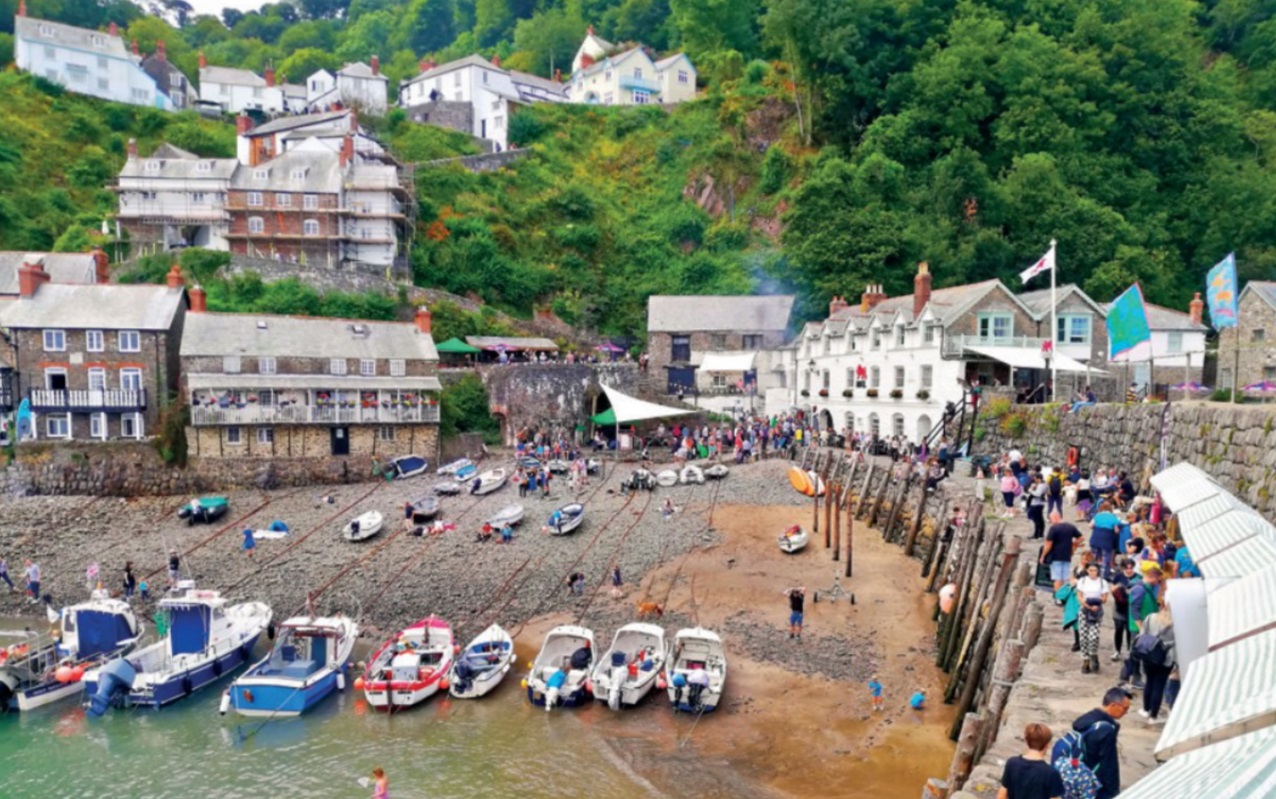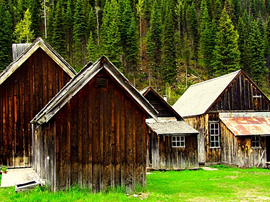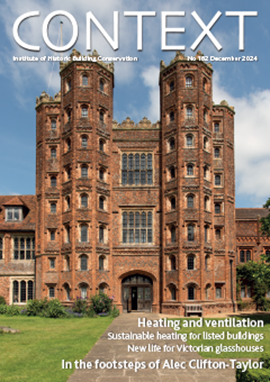Sustaining Clovelly, a history, its management and retrofit
The estate that runs Clovelly, the historic Devon fishing village famous for its steep, cobbled high street and spectacular views, has been gradually bringing it up to date.

|
| A festival at Clovelly harbour (Photo: Dan Rigamonti). |
‘Clovelie’ featured in the Domesday Book. The land passed through different hands until in the 14th century the Manor of Clovelly, an agricultural parish, was bought by the judge Sir John Cary. His younger brother Sir William Cary is said to have built the original stone breakwater, which created a harbour and transformed the site into a fishing village. The family kept the village and lived in it for 11 generations, until the last Cary of Clovelly died. Her widower sold it in 1738 to Zachary Hamlyn, who was born in a neighbouring village and acquired his fortune as a lawyer in Lincolns Inn. Subsequent generations of that family funded improvements, including the construction of carriageways, completed in the early 1800s.
A few years after a storm destroyed boats and killed many fishermen, the village passed to Christine Hamlyn Fane, great grand-aunt of the current owner. She married Frederick Gosling, and persuaded him to change his name to Hamlyn and to devote his banking fortune to the restoration of the buildings of the estate. The long process, still marked by their initials and dates on each house, brought properties back from disrepair and raised living standards for the 500 tenants.
Some 50 years later the village passed down to the current owner, the Hon John Rous. He built a modern visitor centre, out of sight of the village, and introduced an entrance fee for guests. This was a way to generate income to maintain and improve the historic buildings, while keeping the existing community of tenants in place. The visitor centre and the entrance fees were certainly not appreciated by all at first but, nearly two decades later, the village is seeing the fruits of this labour. I spoke to John Rous recently about the village, its refurbishment and technical issues.
While being a display of historical buildings and an open-air museum piece viewed by paying visitors, Clovelly continues to be a living village with a strong community of around 300 residents. Resident filmmakers, artists, musicians and craftspeople add to its cultural life.
Historically Clovelly’s cottages had large chimneys which lost large amounts of heat. For around 30 years the estate has been installing a lined, flue-based system, with interlocking insulated pumice blocks, saving heat and reducing the risk of fire. In 2016 the Clovelly estate commissioned listed property insulation experts Mitchell and Dickinson to start a major thermal insulation programme. By the time of the most recent energy crisis, the award-winning work to most of the buildings was complete.
John Rous says that there was an element of push from the need for energy performance certificates (EPC), but he had already been very aware of heating costs in a village like this. ‘The EPC gave us something like two or three points for all the careful work we did to improve the historic fabric,’ he says, ‘whereas if we had just installed high-heat-retention radiators, we would have earned perhaps 15 points. Going from F to seeking a higher EPC would have pushed us more towards a technology fix rather than the deeper, more carefully thought through work that we actually did.’
Long-term efficiency refurbishment programmes require difficult technological choices. Microgeneration technology is continuously developing, and we now have the government’s current Boiler Upgrade Scheme (BUS). The BUS offers £7,500 towards the capital cost of approved microgeneration equipment on the basis of an EPC. The list of approved equipment has almost 3,000 products on it, from air, water and ground-source heat pumps to biomass systems. The scheme has a nod to fabric improvements by requiring any insulation improvement recommended by the EPC to be carried out first.
Heat pumps are the microgeneration technology attracting most attention, but other technologies such as chip, pellet and log biomass systems can also attract capital grant funding, and they appear on the BUS list. Pondering the wider issues around microgeneration in such a sensitive location as Clovelly, I asked Rous about photovoltaics, and in particular solar slates, which are now being produced not so many miles away over the water in Wales. Some solar slates are the nearest I have seen to actual slate. How might this kind of product go down in Clovelly, where the roofscape is so important?
Rous explained that the estate had been gradually replacing, repairing and refurbishing the roofs of the cottages over recent years, so replacing newly refurbished slate roofs with the solar equivalent would not make sense. The estate uses Delabole slate from Cornwall in preference to the significantly cheaper but often more brittle alternatives from Brazil or China. ‘I have an emotional attachment to the Delabole slate, the quality of the material and its gradations in colour,’ Rous says. ‘You can also find very good quality second-hand slates if the quarries’ order books are full.’
The challenge for listed building specialists Mitchell and Dickinson was to bring 107 17th-century buildings up to modern insulation standards and reduce energy bills, while preserving their character and beauty, with access by a steep, cobbled street. ‘On conservation grounds we couldn’t go for external insulative cladding,’ Rous says, ‘and the rooms are too small for internal cladding.’ Instead, sheep’s wool loft insulation, bespoke draughtproofing and a secondary glazing system using plexiglass and magnetic tape were fitted.
‘If you keep a continuous low background heat, it minimises any damp problem,’ Rous says. ‘You also need to be careful about ventilation as we improve the draft-proofing of the cottages.’ The estate’s guidance encourages its tenants to ventilate the cottage for an hour a day.
Other cost-effective approaches that the estate has looked at can also help with dampness. With positive input ventilation (PIV), a small fan draws tempered air from an attic space into the occupied space. This creates positive pressure, bringing in drier tempered air, and pushing or exfiltrating moist air out through the fabric, and reduces cold drafts. While PIV brings tempered air into the building, heat is still lost with the air replacement. This can be minimised with heat exchangers, such as those used in mechanical ventilation heat recovery units. These help to deal with ventilation while minimising heat loss, and can also be designed to remove moisture from the air.
Whole house systems are an investment, needing plenty of space as well as air tightness, but single-sided units could be a way of treating particular areas in small dwellings. Possible future scenarios for Clovelly include village-wide systems such as growing biomass on the estate to heat networks, or large-scale wind turbines. Rous is open to these ideas, though doing so in an area of outstanding natural beauty, and with various administrative challenges, presents significant changes.
On discussing longer-term planning to reach net zero, Rous looks for flexibility. ‘I prefer a Newtonian approach, with gradual improvements here and there, refining the processes as you go along. You learn and get a bit cleverer.’
We should remember that the impact of these small dwellings, and the small compact lifestyle that goes with them, is inherently less than many modern homes, just because of their footprint. And their fabric historically is already invested in carbon.
This article originally appeared as ‘Sustaining a rural village’ in the Institute of Historic Building Conservation’s (IHBC’s) Context 178, published in December 2023. It was written by Dan Rigamonti, editor of Designing Buildings, a construction wiki that is supported by the IHBC.
--Institute of Historic Building Conservation
Related articles on Designing Buildings
- 100 Sustainable Scottish Buildings.
- Clovelly, a village changing hands and changing with the times.
- Conservation.
- Heritage.
- Historic environment.
- IHBC articles.
- Institute of Historic Building Conservation.
- Planning for sustainable historic places.
- Reconciling conservation and sustainable development.
- Sustainability and Conservation of the Historic Built Environment - an IHBC Position Statement.
- World Heritage and Sustainable Development: new directions in world heritage development.
IHBC NewsBlog
SAVE celebrates 50 years of campaigning 1975-2025
SAVE Britain’s Heritage has announced events across the country to celebrate bringing new life to remarkable buildings.
IHBC Annual School 2025 - Shrewsbury 12-14 June
Themed Heritage in Context – Value: Plan: Change, join in-person or online.
200th Anniversary Celebration of the Modern Railway Planned
The Stockton & Darlington Railway opened on September 27, 1825.
Competence Framework Launched for Sustainability in the Built Environment
The Construction Industry Council (CIC) and the Edge have jointly published the framework.
Historic England Launches Wellbeing Strategy for Heritage
Whether through visiting, volunteering, learning or creative practice, engaging with heritage can strengthen confidence, resilience, hope and social connections.
National Trust for Canada’s Review of 2024
Great Saves & Worst Losses Highlighted
IHBC's SelfStarter Website Undergoes Refresh
New updates and resources for emerging conservation professionals.
‘Behind the Scenes’ podcast on St. Pauls Cathedral Published
Experience the inside track on one of the world’s best known places of worship and visitor attractions.
National Audit Office (NAO) says Government building maintenance backlog is at least £49 billion
The public spending watchdog will need to consider the best way to manage its assets to bring property condition to a satisfactory level.
IHBC Publishes C182 focused on Heating and Ventilation
The latest issue of Context explores sustainable heating for listed buildings and more.
















